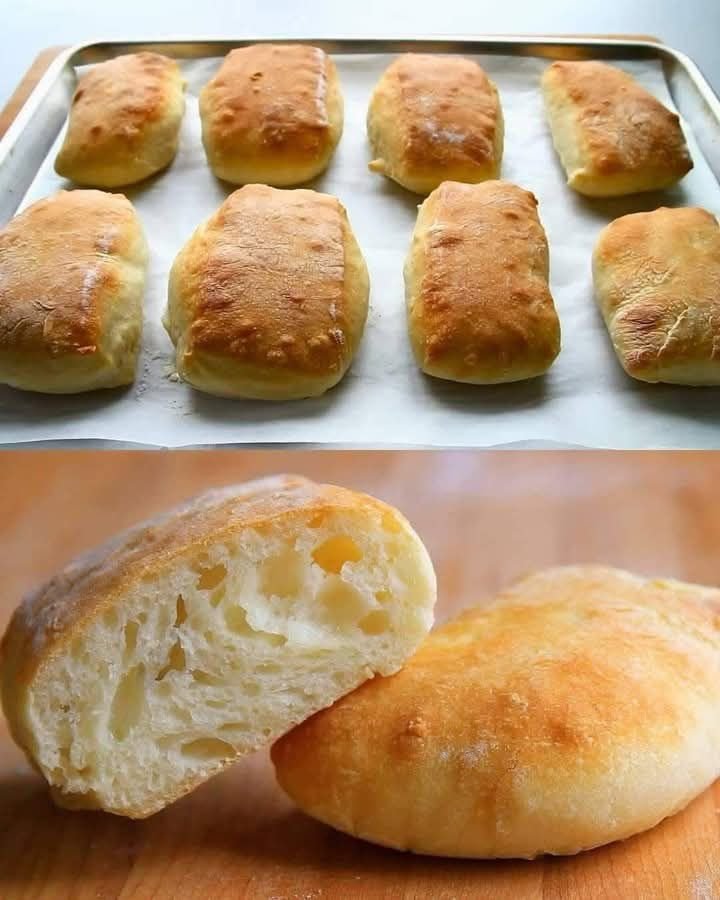This recipe may take time, but the result is a bakery-quality loaf that will make your kitchen smell divine. Whether you’re a seasoned baker or trying bread-making for the first time, this step-by-step guide will walk you through the process. Let’s dive in!
Ingredients
For the Poolish (Starter):
- 1 cup (120g) all-purpose flour
- ½ cup (120ml) water
- ⅛ tsp active dry yeast
For the Dough:
- 2 ½ cups (300g) all-purpose flour
- 1 cup (240ml) water, lukewarm
- 1 ½ tsp salt
- ¾ tsp active dry yeast
- Poolish (prepared starter)
Instructions
1. Make the Poolish (Starter):
- In a medium bowl, mix the flour, water, and yeast until combined.
- Cover with plastic wrap and let it rest at room temperature for 12-18 hours. The mixture will become bubbly and slightly risen.
2. Prepare the Dough:
- In a large mixing bowl, combine the poolish, flour, water, yeast, and salt. Mix until a sticky, wet dough forms.
- Transfer the dough to a lightly greased surface or a large container. Stretch and fold the dough: grab one side, stretch it upward, and fold it over the center. Repeat this motion on all four sides. Let it rest for 30 minutes. Repeat this stretch-and-fold process 3 more times over 2 hours.
3. Shape the Loaves:
- Generously flour a work surface and gently pour out the dough. Be careful not to deflate the air bubbles.
- Divide the dough into two equal portions and shape each into a rectangle. Place the loaves on parchment paper-lined baking sheets. Cover with a clean towel and let them proof for 45 minutes.
4. Bake the Ciabatta:
- Preheat your oven to 450°F (230°C). Place a baking stone or an inverted baking sheet inside to heat up.
- Carefully transfer the loaves (along with the parchment paper) onto the hot baking stone. Bake for 20-25 minutes, or until golden brown and hollow-sounding when tapped.
5. Cool and Enjoy:
- Remove the bread from the oven and let it cool on a wire rack before slicing. Serve fresh or store in an airtight container.
-
Tips for Success
- Ciabatta dough is wetter than most bread doughs, so resist the urge to add extra flour—it’s key to achieving the airy texture.
- Using a stand mixer with a dough hook can make the mixing process easier.
- A spray bottle with water can help create steam in the oven, giving the bread a crispier crust.
Enjoy your homemade ciabatta with your favorite toppings or simply dipped in olive oil and balsamic vinegar!
